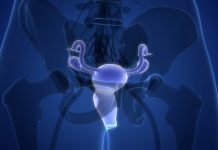An artificial intelligence tool can effectively detect high-risk non-smoking individuals for lung cancer using routine chest X-ray images
An upcoming presentation at the annual meeting of the Radiological Society of North America (RSNA) will highlight this study demonstrating the AI tool.
Lung cancer risk and diagnosis rates
Lung cancer is the leading cause of cancer-related fatalities. According to the American Cancer Society, there are an estimated 238,340 new cases of lung cancer in the United States each year, resulting in 127,070 deaths.
10-20% of lung cancer cases are found in individuals who are “never smokers,” meaning they have either never smoked a cigarette or have smoked less than 100 cigarettes in their lifetime.
Patient demographics and model performance
The United States Preventive Services Task Force (USPSTF) recommends low-dosage CT screenings for lung cancer in adults ages 50-80 with a minimum of 20-pack-year smoking history or those who have quit within the last 15 years. The recommendation excludes individuals with minimum or no smoking history.
However, lung cancer being diagnosed in those who are never smokers is increasing. Without early detection through screening, when lung cancer is identified, it is often more advanced compared to those who smoke.
“Current Medicare and USPSTF guidelines recommend lung cancer screening CT only for individuals with a substantial smoking history,” said the study’s lead author, Anika S. Walia.
“However, lung cancer is increasingly common in never-smokers and often presents at an advanced stage.”
One reason federal guidelines exclude never smokers from screening recommendations is because of the challenge in accurately predicting lung cancer risk within this demographic. Current lung cancer risk assessment tools often rely on data that is not easily accessible to many individuals, such as family history of lung cancer, pulmonary function testing, or serum biomarkers.
Model Performance in never-smokers
In their study, researchers from the Cancer Institute of the Research and Innovation Centre (CIRC) aimed to enhance lung cancer risk prediction for never smokers. They explored the potential of a deep learning model to identify never-smokers at a heightened risk of lung cancer by analysing their chest X-rays obtained from electronic medical records. Deep learning, an advanced artificial intelligence, can be trained to analyse X-ray images and identify disease-associated patterns.
“A major advantage to our approach is that it only requires a single chest-X-ray image, which is one of the most common tests in medicine and widely available in the electronic medical record,” Walia said.
CXR-Lung-Risk
The “CXR-Lung-Risk” was developed by analysing 147,497 chest X-rays from 40,643 individuals (smokers and never smokers) in the Prostate, Lung, Colorectal, and Ovarian (PLCO) cancer screening trial. The goal was to predict the risk of lung-related mortality using a single chest X-ray image as the input data.
The researchers validated the “CXR-Lung-Risk” model in separate groups of never smokers using routine outpatient chest X-rays from 2013 to 2014. Among 17,407 patients, at an average age of 63, 28% were identified as high risk by the model. 2.9% of these high-risk individuals were later diagnosed with lung cancer, exceeding the 1.3% six-year risk threshold recommended for lung cancer screening CT guidelines.
Even after adjusting for age, sex, race, previous lower respiratory tract infection and prevalent chronic obstructive pulmonary disease, the high-risk group still had a 2.1 times higher risk of developing lung cancer compared to the low-risk group.











